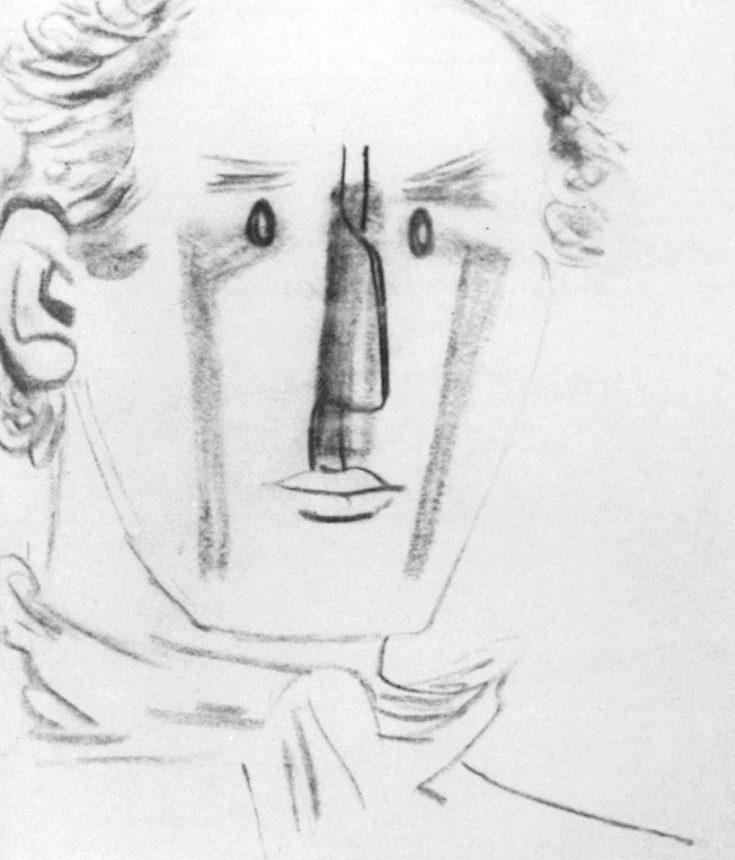Michel ADLEN
December 31, 2018Jean ADLER
December 31, 2018Jankel ADLER
TUSZYN (POLAND) 1895 – ALDBOURNE (GREAT BRITAIN) 1949
Jankel Adler was born into a religious family and was the seventh in a family of ten children. His father was a miller in Tuszyn, near Lodz. He studied engraving in Belgrade in 1912 and enrolled in an art school in Barmen, Germany, a year later. He continued his studies until 1914 at the Academy of Decorative Arts in Dusseldorf with Gustav Wiethüchter. During the war, he joined the Russian army and was captured by the German army but he was soon released.
In 1918, he became close to the group Der Sturm. Back in Poland, Adler exhibited his work in Lodz and in Warsaw. In 1919, in Lodz, he was involved in the creation of the group Yung Yiddish, together with founder-writer Moyshe Broderzon. He left for Dusseldorf in 1920. He met Otto Dix in 1922. That same year, he helped found the group Die Kommune and participated in the “International Exhibition of Revolutionary Artists” in Berlin. His Planetarium frescos in 1925 were highly successful. Following a trip to Spain in 1930, Adler returned to the Dusseldorf Academy in 1931 where he continued to study with Paul Klee. He drew arevolutionary poster during the Reichstag elections in February after Hitler came to power.
Adler fled Nazi Germany and arrived in Paris in 1933. He traveled widely from 1935 to 1937 and visited Italy, Romania, Yugoslavia, Czechoslovakia, Russia, and Poland. A major retrospective of his work took place in Warsaw in 1935. Jankel Adler returned to Paris in 1937 and worked with the printmaker Stanley William Hayter at Atelier 17. He stayed at Cagnes-sur- Mer before joining the Polish army. During World War II, he was discharged from service because of his poor health in 1941, and was evacuated to a suburb of London in 1943. Adler never went back to Germany. As many of his relatives died in the Holocaust, he refused to exhibit his work in that country and ended his days in England.
Stories of Jewish Artists of the School of Paris 1905-1939
FRENCH-ENGLISH
Capitale des arts, le Paris des années 1905-1939 attire les artistes du monde entier. De cette période de foisonnement, un terme est resté, celui d'Ecole de Paris, qui recouvre une grande diversité d'expression artistique. Dans ce brassage dont Montparnasse est le creuset, un groupe se distingue : celui des artistes juifs venus de Russie, de Pologne et d'Europe centrale. Si leurs styles sont variés, un destin commun les rassemble : ils fuient l'antisémitisme de leur pays d'origine. Certains ont connu la célébrité dès les années 1920, tels Soutine, Lipchitz ou Chagall. D'autres n'ont pas eu le temps ou la chance d'y accéder. Près de la moitié a péri dans les camps de concentration nazis.
From 1905 to 1939, Paris attracted artists from all over the globe as the capital of the art world. This period of artistic proliferation became known as the School of Paris, and includes a great diversity of artistic expression. Within the teeming art world centred on Montparnasse, one group set itself apart: Jewish artists from Russia, Poland, and Central Europe. Although their styles were diverse, they shared the common fate of fleeing anti-Semitic persecutions in their home countries. Some became famous in the 1920s, such as Soutine, Lipchitz, and Chagall, while others did not have the time or the luck to gain renown. Nearly half of these artists died in Nazi concentration camps.





